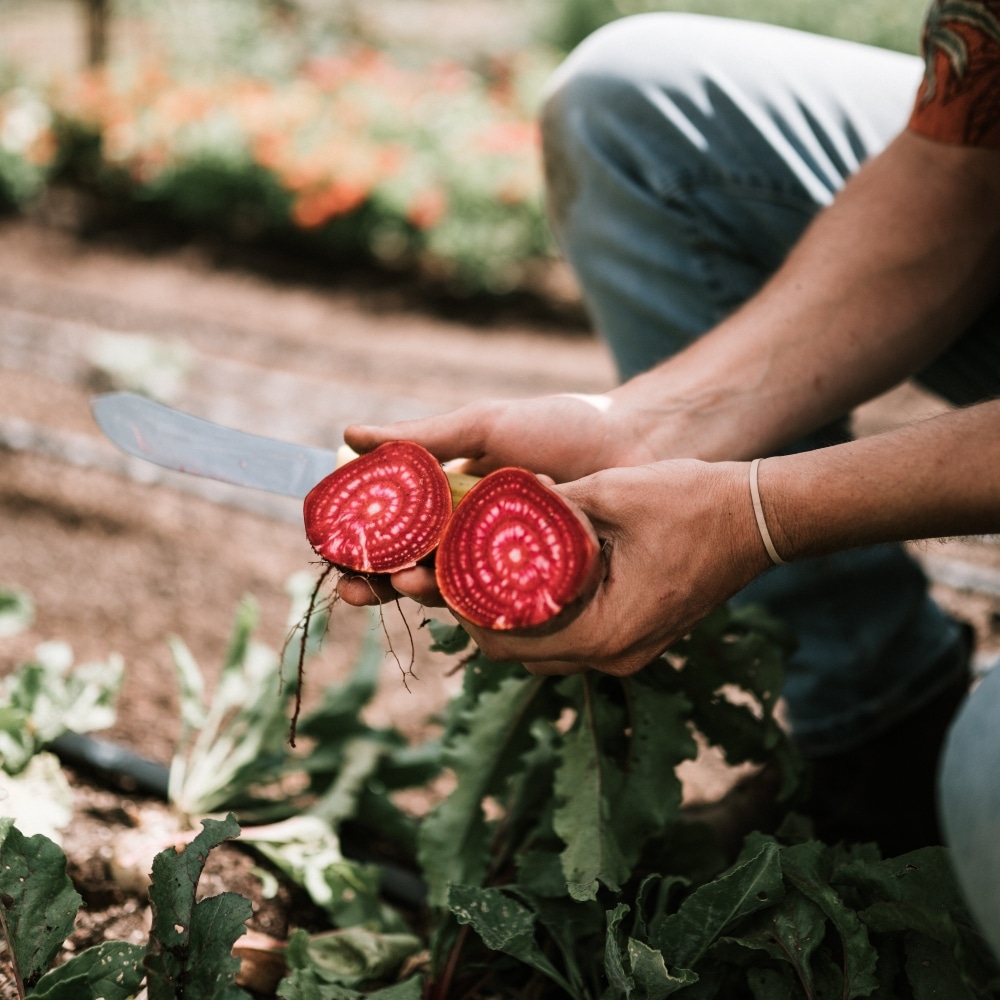In 2016, consumers got their first taste of The Impossible Burger, created from plants to mimic the taste, texture, and even bleeding properties of animal-derived beef. The purpose? To cleverly demonstrate that crafting meat from plants wasn’t so impossible after all.
Since then, the culinary world has been exploring the plant kingdom to discover what else is possible. So what other foods can serve as a stand-in for meat?
The California Cantaloupe Advisory Board unveiled a novel answer—The Possible Burger—at the International Fresh Produce Association’s Consumer Connection Conference.
 Polina Kovaleva/Pexels
Polina Kovaleva/Pexels
This meatless burger, made from fresh cantaloupe, aims to showcase the fruit’s versatility and appeal to Generation Z consumers, who are looking for new ways to reduce their meat consumption.
“What better place to roll out our new campaign featuring this unique vegan burger made from fresh cantaloupe?” Garrett Patricio, chairman of the California Cantaloupe Advisory Board and president of Westside Produce/Classic Fruit, said in a statement.
“This group already understands that fresh produce suppliers can gain new customers, especially younger ones, with exciting ideas for using fresh produce,” Patricio said.
Data shared at the conference indicated that Generation Z consumers are more health-focused than other generations, under-indexing in alcohol consumption and over-indexing in meat alternatives. This demographic is particularly receptive to new and innovative uses of fruit and vegetables in their diets.
The Possible Burger
The Impossible Burger, and others like it, were also developed to be commercially viable in order to directly compete with their animal counterparts on shelves and restaurant menus—giving consumers a low barrier to choosing alternatives to eco-damaging beef.
 California Cantaloupe Advisory Board
California Cantaloupe Advisory Board
In contrast, the Possible Burger was created to appeal to cooks who can dedicate a little more time—16 hours and 45 minutes to be exact—to creating something innovative at home. The Possible Burger recipe also calls for a barbecue smoker.
New York-based Chef Will Horowitz was tasked with crafting the burger with the goal of reimagining cantaloupe as more than just a sweet fruit. The chef and food writer previously gained attention for his innovative use of fresh produce as stand-ins for meat, including prosciutto made from radishes, hot dogs from carrots, and watermelon ham.
“We designed the cantaloupe burger so that consumers can look at this fruit in a completely new, reimagined way,” Horowitz said in a statement. “In this concept, we wanted cantaloupe to really be the star of the plate. And people love burgers.”
“The cantaloupe burger came about simply because of how much moisture was in the melon and how delicious they are from the start,” Horowitz said.
To develop The Possible Burger from cantaloupe slices, Horowitz turned to processes typically applied to animal meats but easily translated to produce—a similar approach he took to his waterlemon ham recipe, which went viral in 2018.
“We started by taking slightly under ripe cantaloupe, curing it and smoking it so that when you bit into it, it wasn’t too sweet,” Horowitz said.
“I wouldn’t say it’s a replica of a burger,” Horowitz said. “It’s really its own beautiful thing.”
Fruits and vegetables as meat alternatives
While cantaloupe is now stepping into the spotlight with The Possible Burger, other fruit and vegetables have also been successfully repurposed as meat substitutes. Here are five notable examples:
 Getty
Getty
1 Jackfruit
Jackfruit’s fibrous texture makes it an excellent substitute for pulled pork. Its neutral flavor allows it to absorb spices and sauces effectively, making it versatile in various dishes.
Recipes to try: Hawaiian Kahlua Jackfruit Pork, Pulled Barbecue Jackfruit Sandwich With Grilled Pineapple, and Pabellon Criollo Jackfruit Shredded Beef.
 Canva
Canva
2 Mushrooms
Mushrooms, such as portabello, lion’s mane, and oyster varieties, offer a meaty texture and umami flavor. While they can be used in place of beef in burgers, stews, and stir-fries, mushrooms can also work as seafood and chicken substitutes in a variety of dishes.
Recipes to try: Crispy Oyster Mushroom Po’Boy, Hearty Mushroom Bolognese With Fettuccine, and Portabello Pot Roast
 Karolina Grabowska/Pexels
Karolina Grabowska/Pexels
3 Eggplant
Eggplant’s spongy texture makes it a great alternative for dishes such as eggplant parmesan or grilled eggplant steaks. It can also be smoked and dehydrated to create a bacon-like flavor.
Recipes to try: Eggplant Meatballs in Homemade Marinara, Eggplant Parmigiana, and Smoky Grilled Eggplant Ballpark Hot Dogs
 Karolina Grabowska/Pexels
Karolina Grabowska/Pexels
4 Cauliflower
Cauliflower is incredibly versatile and can be transformed into “steaks,” mashed as a potato substitute, or used in place of chicken wings. Because of its mild flavor and firm texture, the highly adaptable cauliflower was chosen as the star of meatless offerings at Chick-fil-A and Dave’s Hot Chicken.
Recipes to try: Spicy Cauliflower Wings With Pesto Dipping Sauce, Cauliflower Steaks With Chimichurri Sauce, and Whole Roasted Jerk Cauliflower
 Pexels
Pexels
5 Beets
Beets are used to create plant-based burgers that mimic the appearance and taste of beef patties. Their natural color and earthy flavor contribute to a realistic meat alternative.
Recipes to try: Beefy Beet Burger, Charred Mediterranean Falafel Burger, and Jamaican Beet and Feta Panzanella Salad
For more plant-based stories like this, read:
JUMP TO ... Latest News | Recipes | Guides | Health | Shop






.jpg?sha=07fe95efab9d6185)


